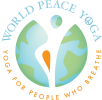Posture Practice - Going Deeper
Anatomy - Going Deeper
Healing Modalities
Stress Management
Breathwork - Going Deeper
Meditation - Going Deeper
Mindfulness
Subtle Body/Energy - Going Deeper
Yoga as a Business/Lifestyle - Going Deeper
Yoga Philosophy - Going Deeper
Plant-Sourced Living - Going Deeper
Standing Review
Alignment
- Describe the ideal placement of the front knee in Warrior II and Extended Side Angle. (Specify where the knee joint is in relation to other joints or body parts.)
- Knee over ankle and pointing toward 2nd or 3rd toe.
- Describe the most stable and safe alignment of the hips in Warrior I, Warrior III, and Twisted Triangle.(Specify the relation of the hip points in relation to the long or short edge of the mat.)
- Hips are even with each other and aligned with the short edge of the mat.
- Describe the ideal alignment of the shoulders/shoulder blades in Triangle Pose and Half Moon Pose. (Specify the relationship between the top shoulder and bottom shoulder.)
- Top shoulder/shoulder blade is stacked over the bottom shoulder/shoulder blade
Anatomy
- What major muscles are engaging in both Tree Pose and Mountain Pose?
- Rhomboids, erector spinae, core, quads, etc.
- What major muscles are being stretched in both Standing Forward Fold and Downward Facing Dog?
- Hamstrings (and more, but hamstrings are the main muscle group).
- What is the relationship between the knee joint and the direction the toes point in standing poses?
- Knees and toes point in the same direction.
Assists
- How might one assist a student in Warrior II whose knee is pointing inward and whose torso is leaning forward?
- For the knee, put your hand on the outside of the student’s knee and ask the student to press into your hand until the knee is aligned over the ankle. For the torso, stand behind the student and wrap one of your arms under the student’s back arm and hold the shoulder; hold the student’s front arm with your other hand. Ground with some downward pressure while drawing the torso back to vertical.
- How might one assist a student in Triangle Pose whose top shoulder is leaning far forward from their bottom shoulder?
- Stand behind the student. Ground them by placing one hand on their upper hip and your leg behind their hip. Then, with your free hand, draw their top shoulder back, aligning it over the lower shoulder. This may lift the student’s lower hand to come higher on their leg.
- How might one assist a student in Mountain Pose whose shoulders are lifted and ears are forward of their shoulders?
- Stand behind the student. Bring your thumbs to just under their occipital bone (base of skull) and your pointer or middle fingers to near their temples. Ground the student by pressing your forearms downward on their shoulders while using your hands to draw the skull back (and up).
Props
- What props can help a student whose hands don’t reach the floor in Wide-Legged Standing Forward Fold?
- Block(s) under one or both hands. can be stacked to bring the floor higher.
- How might one use a prop or props for more stability in Triangle Pose?
- a block or blocks under the lower hand
- practice the pose with the back against a wall
- What prop might help a student with balance in any standing balance pose?
- The wall.
Modifications
- Describe some modifications and/or variations of Extended Side Angle Pose.
- forearm to thigh with top arm alongside the ear
- lower hand to block or floor inside the leg
- upper arm alonside ear or vertical
- lower hand under the thigh and upper hand behind the back to bind the pose
- seated on the edge of a chair
- Describe some modifications and/or variations of Triangle Pose.
- lower hand on block, leg or floor
- upper hand to sky, on hip, alongside the ear, or behind back reaching for sacrum or opposite hip crease
- How might one modify Warrior II for someone with a shoulder issue? Issues standing?
- keep hand on hip for a shoulder issue
- sit on edge of chair or against a wall for issues standing
Sequencing
- What is the most foundational standing pose that should be taught before other more complex standing poses?
- Mountain Pose
- Which option follows the principle of separately sequencing externally rotated standing poses (where the front hip turns out like Warrior II) and internally rotated standing poses (where the back hip turns in to square the hips like Warrior I)?
- A: Warrior II, Triangle, Extended Side Angle, Mountain, Warrior I, Warrior III
- B: Triangle, Warrior I, Warrior II, Warrior III, Extended Side Angle, Mountain
- Which sequencing option builds from simple to complex and works to prep the body for a peak pose?
- A: Pyramid/Intense Side Stretch Pose, Triangle, Twisted Triangle, Standing Forward Fold, Twisted Half Moon, Mountain, Downward Facing Dog
B: Downward Facing Dog, Low Lunge, Twisted Low Lunge, Standing Forward Fold, Mountain, Pyramid/Intense Side Stretch Pose, Twisted Triangle, Twisted Half Moon
- A: Pyramid/Intense Side Stretch Pose, Triangle, Twisted Triangle, Standing Forward Fold, Twisted Half Moon, Mountain, Downward Facing Dog
